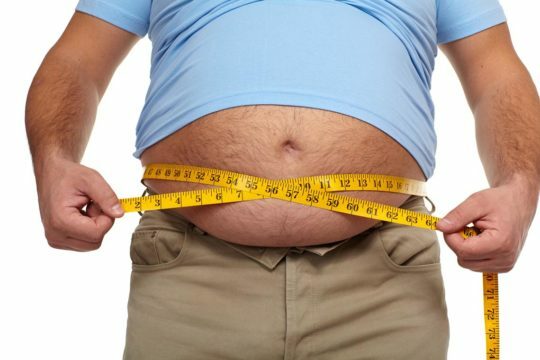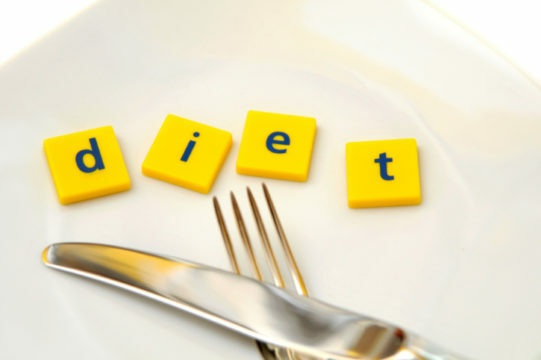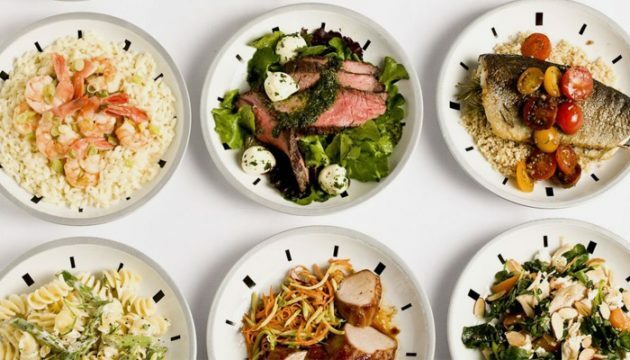There are three reasons for weight loss in cases of diabetes mellitus type 1: treatment of the disease, weight loss or the combination of the first and second. The peculiarity is that the diet should be carefully adapted to the needs of the patient, the condition of his body and the degree of development of the disease itself.

Diabetes mellitus is a serious disease that exerts a significant strain on the body, disrupts biological processes. Therefore, regular diets or debilitating loads can do more harm than good.
Power mode
So, how to lose weight with type 1 diabetes is not always easy, the patient should consult a specialist: an endocrinologist, a nutritionist. The diet should be calculated accurately and in detail. Regularity of food intake depends on the cause of weight loss:
- Diet treatment means eating three times a day. Reducing body weight helps to reduce the concentration of glucose in the blood, which prevents the development of complications.
- Disturbance of metabolism due to diabetes leads to intensive weight gain, and later to obesity. When losing weight to normalize weight, nutritionists recommend 3 to 5 meals a day.
- Diet for treatment and stabilization of body weight at the same time implies food 6 - 7 times a day.
Meals should be taken at the same time each day. This is often recommended for regular diets, systematic nutrition positively affects metabolism, promotes the proper absorption of vitamins and trace elements. Such measures are an integral part of the life of diabetic patients with a decrease in body weight.
General rules for the diet
In case of type 1 diabetes, the patient experiences a sharp decrease in the level of sugars in the blood, at this moment he needs carbohydrate food, albeit in a small amount: a candy or a sugar cube. Otherwise, the condition may worsen, which can even lead to a coma. Naturally, such food does not contribute to weight loss, because the main diet contains low-carbohydrate foods.

Doctors recommend adhering to the observance of diet number 9( table number 9).The peculiarity of such nutrition is the maximum exclusion of products with a high glycemic index, and an increase in dishes with low GI:
- Completely eliminate fried, smoked and spicy food, seasonings, and also alcohol and canned food.
- You should use sugar substitutes instead of sugar.
- The amount of carbohydrates and fats in food is reduced.
- The amount of protein should be equal to the norm of healthy nutrition.
- You should eat only stewed, baked or boiled food.
The daily ration should be rich in ascorbic acid, vitamins of different groups, nutritionists recommend more often to use decoctions of broth, fresh fruits and vegetables, greens.
For the proper functioning of the liver, oatmeal, cheese, cottage cheese should be included in the menu - these products contain substances that contribute to the rapid breakdown of fat stores. Also, olive oil, low-fat fish types is acceptable.
The norm of calories per day is reduced by 10-20% of the average daily intake, an individual amount will help calculate the dietician. You can refer to the general standards: for men 2700 kcal, for women 1900 kcal. Most carbohydrates are consumed before lunch, so they will have time to fully assimilate, and not to be deposited in stock.
Diet( with bezinsulinovym diabetes)
Many are worried about the question of how to lose weight in type 1 diabetes and not to harm the body. There are two types of this diet, they are designated as table number 9A and table number 9B.Diet No. 9A is prescribed at the initial stage of diabetes, when insulin is not yet used or is administered in small doses. It has more severe limitations.

To achieve the result, it is important to carefully treat the products, the daily number of calories should be evenly distributed for each meal.
List of products recommended:
- vegetables: cucumbers, tomatoes, cabbage( any varieties);
- greens( all kinds);
- radishes, carrots, radishes, turnips;
- green beans;
- pepper;
- fungi;
- eggplant, zucchini( zucchini).
It is forbidden to eat sweet drinks, sugar, honey or jam, cheeses with fat content more than 30%, alcohol. You also can not eat pâtés, nuts, sweets and chocolate, muffins, cookies, mayonnaise, cream.
Nutrition for insulin diabetes
Table No. 9B is distinguished by more caloric foods. The daily amount of sugar is limited to 30 grams, but it is not consumed in its pure form, but is obtained from various products: sauces, bread, juice. Jam, jam or honey is forbidden.
In addition to high caloric content, the diet is characterized by a balanced amount of fats, proteins and carbohydrates. Table No. 9B is suitable for an active lifestyle, including physical activity.
Caloric content of this type of food is increased due to more portions, and the restriction of products remains the same as with diet No. 9A.A complete rejection of animal fats is not recommended, but their amount should be moderate, and they should come from natural ingredients, such as low-fat meat, fish or dairy products. But the cooking fats: margarine, spread and other natural fat substitutes contain many artificial additives, they should be abandoned completely

Fractional food should be varied, this will allow a diabetic patient not to experience discomfort and the diet will be tolerated naturally. With an increase in caloric content, it is enough to increase physical activity to avoid fat deposition in the stock.
Digestion-improving products
It's worth to take a closer look at the list of foods that improve digestion. Their use also has a positive effect on metabolism. Losing weight with diabetes is often difficult, especially if the patient is obese.
So, to useful for digestion products include:
- coarse bread, with bran;
- soups or broths with low fat content, for example, mushroom, fish or meat( usually use a second meat broth), and as a filling, add vegetables;
- meat with low fat content: rabbit, beef, pork, poultry( excluding geese, ducks and other meat with high fat content);
- ham, boiled sausages or sausages;
- baked or boiled lean fish;
- chicken eggs( no more than 2 pieces per day);
- dairy products with a low salt and fat content;
- cereals, with the exception of rice and mango;
- cream or vegetable oil;
- fresh vegetables and greens;
- fruits, berries( low in sugar);
- any sweet drinks.
Pay attention to foods that reduce the level of sugars in the blood, including eggs, seafood, fish, meat( including poultry), mushrooms, green vegetables, butter and cheese.
Physical exercise against excess weight
Sport is one of the best ways to lose weight. In cases of diabetes, the amount of stress directly depends on the patient's condition, the degree of development of the disease. In addition, it is important to increase caloric content. For example, if a patient decides to go in for sports, it is recommended to go from menu 9A to diet 9B.
Before blunting to physical exercises, specialist consultation is necessary. It is required to know exactly how much exercise will benefit, and not harm the body.
Unlike type 2, diabetes 1 group does not always allow intensive training. If a person has not been fond of sports before, just a more active way of life, a morning exercise, walking, you can replace the public transport with a bicycle.
Professional athletes are more physically prepared, but to continue training they need constant monitoring of doctors. A combination of power and aerobic loads is recommended.
In conclusion, it can be concluded that losing weight with diabetes is very realistic if you approach the problem seriously. The key to success will be systematic exercise and balanced nutrition.



